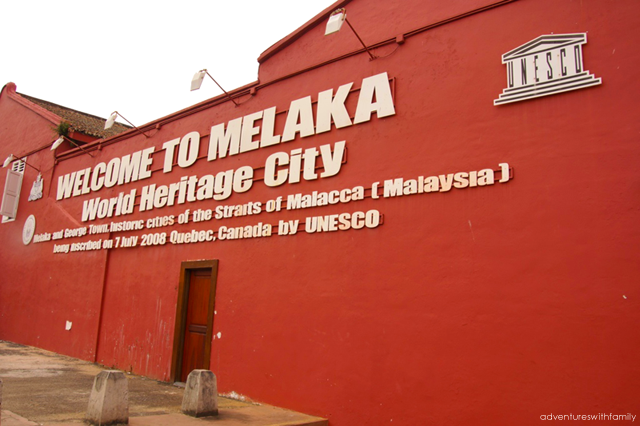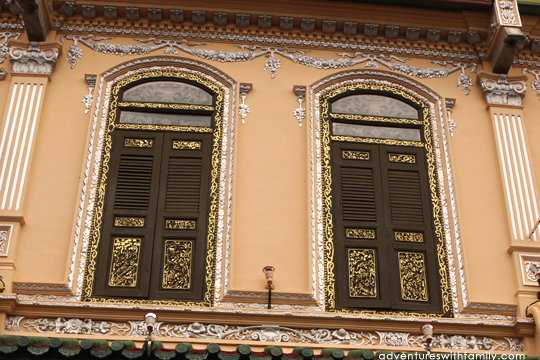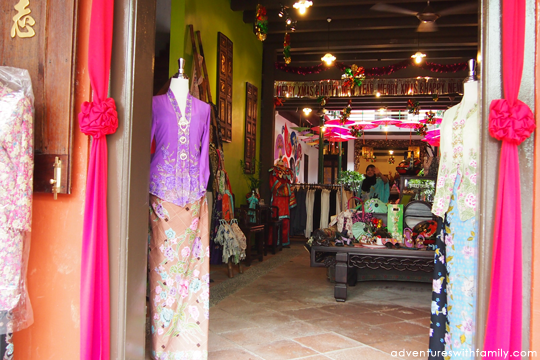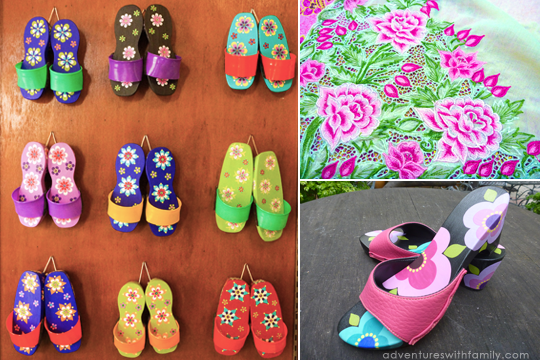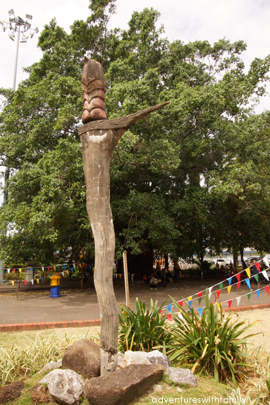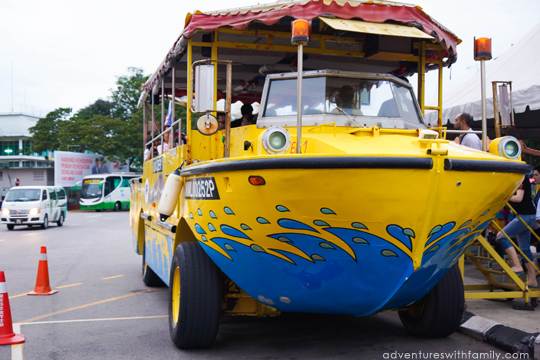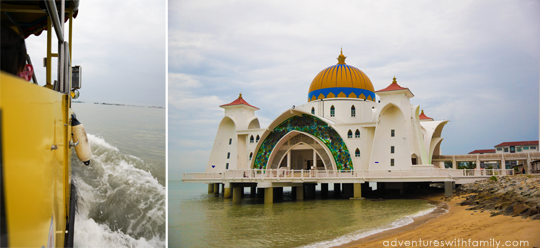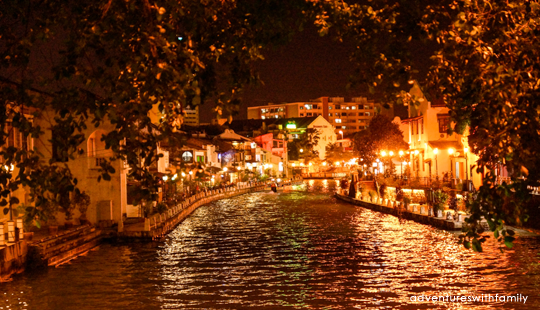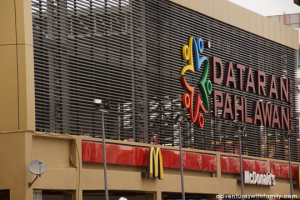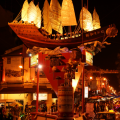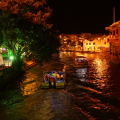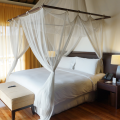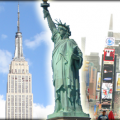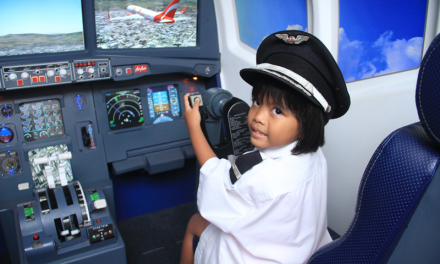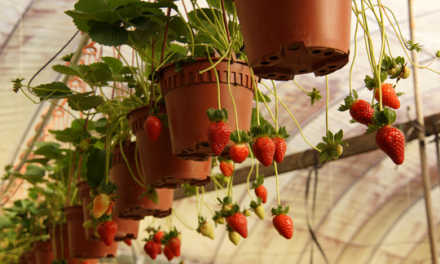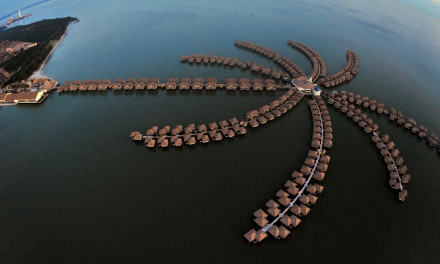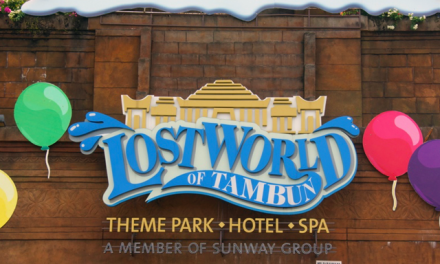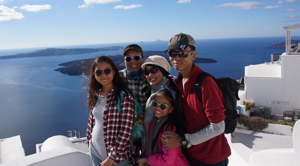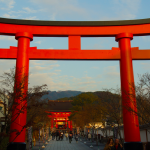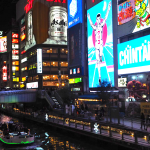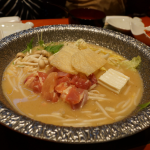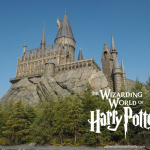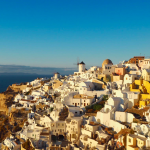Malacca (also locally known as Melaka) is one of the most fascinating cities in Malaysia. Colonised by the Portuguese, Dutch and British for over 400 years over its strategic location for maritime trade, its rich history has earned itself the title of Unesco World Heritage City in 2008. It is probably the only place in the world that has ruins of both Asia and Europe.
With my son learning History in school, I thought it was a good idea for him and the girls to learn a bit about Malacca’s history in a fun way. We explored the historical sites on a trishaw, toured the city and the Straits of Malacca on a “duck”, cruised on the Melaka River, and explored the Peranakan heritage on foot.
Exploring the World Heritage City of Malacca by Trishaw
A fun way to explore Malacca’s historical sites with kids is by taking a Trishaw Tour. My 5-year-old girl loved riding on the trishaws. She selected two trishaws for us, both adorned with pink flowers, Hello Kitties and topped with a huge pink butterfly.
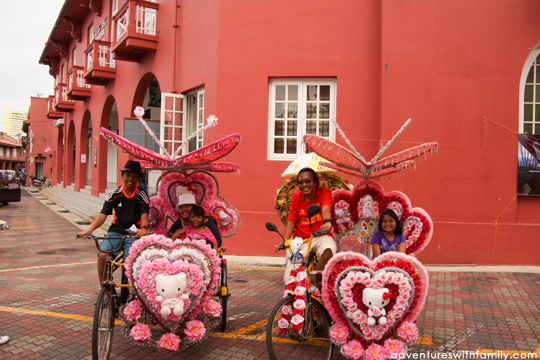
Hubby and son didn’t actually do the cycling. The rider-cum-tour-guide let us take a picture in front of the historical buildings before we started our tour.
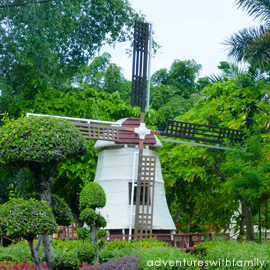
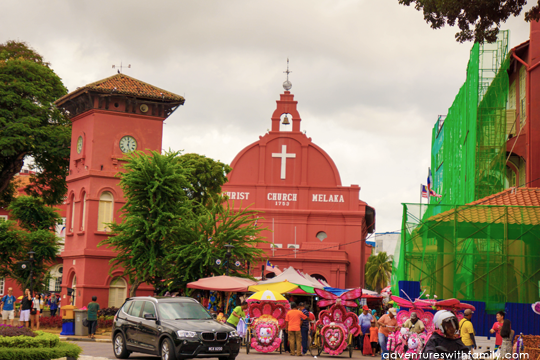
Our next stop was at A’Famosa Fort, which was amongst the oldest surviving European architectural remains in South East Asia. Built by the Portuguese, it once housed the entire Portuguese administration and had hospitals, churches, and residences. Below was what remained of the fort after Sir Stamford Raffles, modern founder of Singapore, stopped the total destruction of the fort by the Dutch.
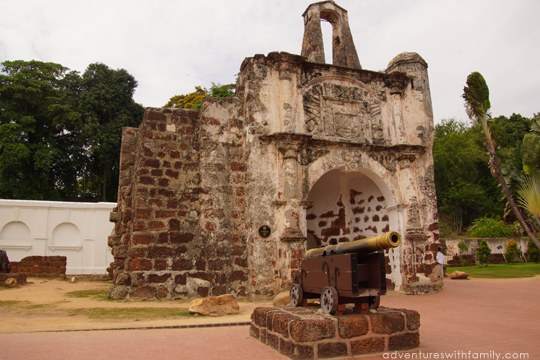
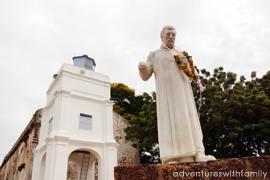
We climbed the stairs to the summit of St Paul’s Hill where there were the ruins of St Paul’s Church and a marble statue of St Francis Xavier, the missionary who introduced the Catholic faith to Malacca. Lining the walls of the ruined church were intricately engraved tombstones belonging to Dutch nobles. St Paul’s Hill also gave us a good view of the city.
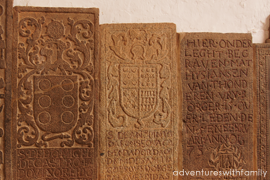
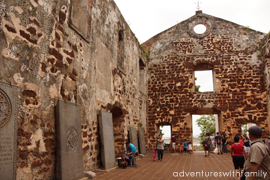
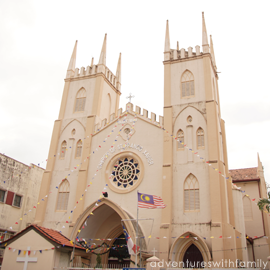
Other popular historical sites in Malacca are the Malacca Sultanate Palace, the St Francis Xavier’s church and archeological sites like the one below.
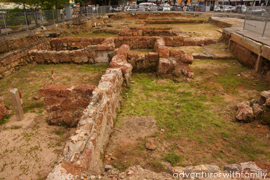
Exploring the Peranakan Culture and Heritage
Malacca is also known for its rich Peranakan history. The Peranakans (also known as Baba-Nyonya and Straits Chinese) are descendants from Chinese migrants who arrived in Malacca in the 1400s and adopted the Malay customs, culture and language. The shophouses along Jalan Tun Tan Cheng Lok boasted the intricate designs of Peranakan architecture.
Around this Chinatown area were the Baba-Nyonya Heritage Museum, Straits Chinese Jewellery Museum and shops selling Nonya Kebayas, and other Peranakan products like the hand-painted umbrella.
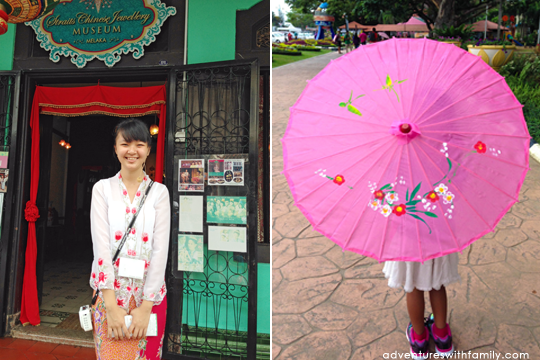
Although there were many shops selling Nonya Kebayas in Malacca’s Chinatown area, we found better prices for such kebayas just outside the Chinatown area, like this one (pictured below) that we found along Jalan Laksamana in the red Dutch building across the road from the Church of St Francis Xavier.
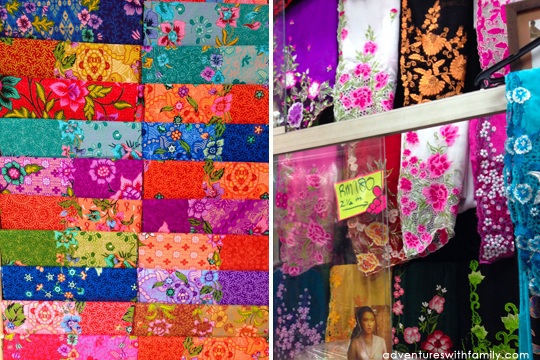
We also discovered this little gem around the Chinatown area that sold pretty hand-painted traditional clogs. The owner of that shop has been hand-painting these clogs for years. I bought one beautifully painted sandal from the shop (bottom-right picture).
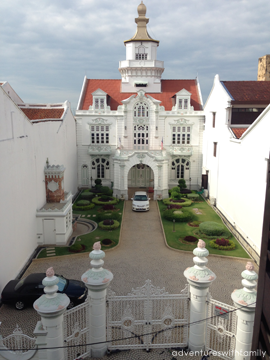
There was this building in the Chinatown area which was different from the rest. While most shophouses in Malacca’s Chinatown area had little or no driveway or porch, this building had a huge driveway. We were told that during the Dutch’s occupation of Malacca, the Dutch imposed high taxes on properties with big driveways, car parks and porch, so the owner of this property must have been very rich to create a driveway like this.
The Malay Heritage
Long before the colonisation by the Portuguese, Dutch, and British, and before the arrival of the Straits Chinese, Parameswara, the last king of Temasek (now Singapore), discovered Malacca and became the first Sultan of Malaysia. He named the city after a Malaka tree which he sat under.
A Malay legend that is more famous than the Sultans of Malacca is one of the Sultan’s admiral, Hang Tuah. Believed to be one of Malaysia’s greatest silat masters, he is still held in high regard in Malaysian Malay culture today. He was presented with a keris (a Malay wavy dagger believed to have mystical powers) after defeating a warrior named Taming Sari. A huge replica of the Taming Sari Keris is seen at Malacca’s historical site. The Menara Taming Sari, a revolving tower which offers a great view of the city, was also named after the keris.
Although Malaysia’s Sultanate started in Malacca, Malacca is now one of the very few states in Malaysia without a Sultan. The Sultan in Malacca fled to Johor after Portuguese’s invasion.
Other Attractions
Another interesting attraction in Malacca is the Maritime Museum which is itself a replica of the ‘Flor de La Mar’, a Portuguese ship that sank off the coast of Melaka while on its way to Portugal, carrying stolen gold and other treasures from the Malaccan Kingdom. Interestingly, there were recent reports saying that they have found this ship in Java. I am not sure how true the report is but imagine finding such stolen historical treasures!
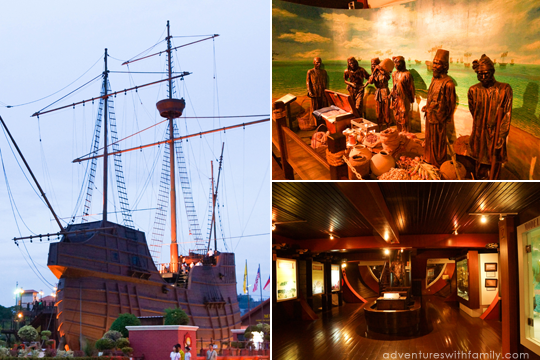
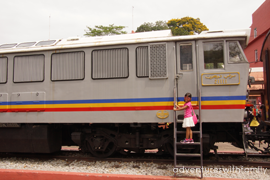
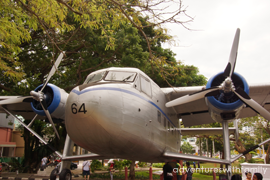
The Malacca Duck Tour
The Duck Tour was another fun thing to do with kids in Malacca. Starting at the Menara Taming Sari, the “Duck” brought us on a land tour around Malacca’s city centre and a cruise around the Straits of Malacca. The tour guide provided us with a good history of Malacca during the trip.
The highlight of the trip was to see the beautiful floating Malacca Straits Mosque (or Masjid Selat Melaka).
The mosque looked even more stunning in the evening as the sun set behind it.
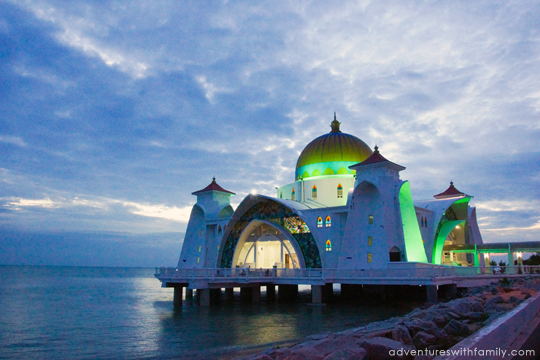
Malacca River Cruise
A nice way to spend the evening in Malacca was to cruise down the Malacca River. Read more.
Jonker Walk Night Market
We also went to the lively Jonker Walk Night Market and found some interesting and quirky souvenirs. Read more.
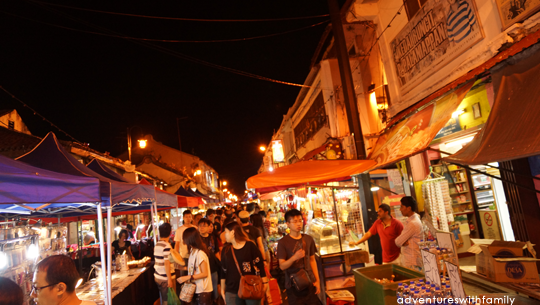
Shopping
Shopping for us was at the Dataran Pahlawan Mega Mall. It was so big that we were completely exhausted walking from one end to the other.
Dining
There were also plenty of dining options within the mall. We tried the halal Chicken Rice Balls, which were so popular that they were sold out even before lunch time ended!
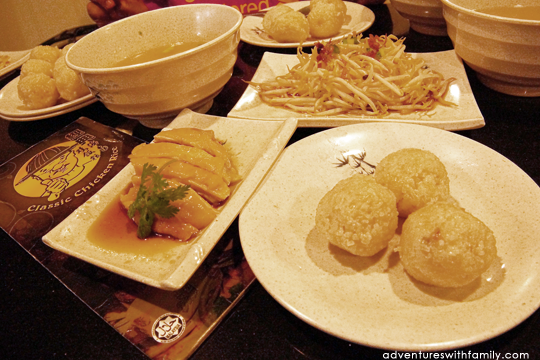
There were also many eateries selling local malay dishes, with the most popular being asam pedas with rice. For dessert, a must-have was the chendol with freshly-squeezed coconut milk and the right amount of gula melaka.
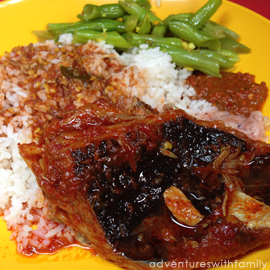
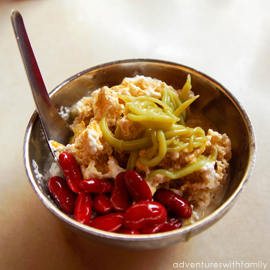
Accommodations for the Family
In the spirit of exploring the rich Malaccan history and culture , we decided to stay in a Peranakan-style hotel with family rooms called Hotel Puri Melaka.
There were a couple of hotels that we considered with rating more than 7 that offered family rooms:
- The Sterling Boutique Hotel (colonial-style hotel around Jonker Street)
- Swiss Hotel Heritage Melaka (around Jonker Street)
- Syaz Meridien Hotel (value-for-money but away from all the attractions)
- A’Famosa Resort Melaka (they have many family rooms, but not located near the historical sites)
Other hotels in Malacca that were popular (rating above 8) but did not offer family rooms were:
- Hotel Casa del Rio (facing the Malacca River)
- Hotel Equatorial (near shopping centre)
- Hatten Hotel (connected to mega mall via aircon link bridge)
For a stay in a Kampong house without getting out of the city, try Kampong Morten located along the Malacca River.

